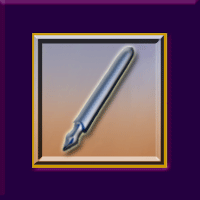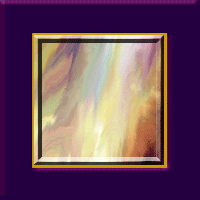
INTRODUCING YOURSELF IN PERSON AND IN PRINT
In these blogs, I usually focus on a specific element of the art and science of writing. However, today I’m writing a farewell letter to Mary B, a professional acquaintance who is embarking on a new phase of life in a distant locale and may need to enhance the means by which she introduces herself to a new community.
USING YOUR FIVE SENSES
Regardless of your career or avocation, you’ll need to introduce and re-introduce yourself to colleagues and the general public periodically. I’ve found that using the five senses can be a useful tool in shaping your branding, including self-introduction. Effective wordsmithing requires empowering your words fully! And although you may not be able to directly access some senses in speech or print, drawing upon the essence of each sense can help you shape material that will fulfill your readers and listeners expectations.
As you think about how you will develop this coordinated approach to enhancing your brand I suggest you ensure the design elements you incorporate reflect your personal life as well. How do you perceive and appreciate the five senses of sight, sound, touch, smell, and taste? How you answer these questions reflects some of the most challenging design dilemmas for writers.
~ VISION
This is the most obvious sense to address in materials presented in print or electronic form. Color, form, and the perception of texture should all be addressed in this sphere of the words and images you create to introduce yourself. To begin, you might open your closet and look at the color palette on which you base your wardrobe. There are many schools of color theory that focus on varying principles for determining the colors most suited to your hair and skin. The more refined ones also consider your personality. But regardless of whether you wish to embark on a program of personal style analysis, simply focusing on coloration you find attractive should aid you in this project.
I’ve found three simple exercises for summarizing the elements of form that appeal to each of us. First, look at several fonts [both seraphed and non-seraphed] and especially the ampersands they include. Do you prefer straight lines? Or are you attracted to classic curlicues? Also consider the types of bullets you might employ. The simplest choice is between circles and squares. Which of these—or other shapes—harmonize with the fonts you prefer? Finally, walk through concrete or virtual museums and/or art galleries, concentrating on the styles employed (rather than subject matter) that appeal to your sensory experience. What attracts and impacts you the most as you pass from realism to modernism and science fiction animè and manga? Is it the color choice of the artist? Perhaps it is the overall rich palette of images? Or is it something as mundane as their distinctive logo or slogan used to describe their work in their marketing materials?
At this point, I hope you see an emerging pattern in what appeals to you. With a notebook or electronic file at hand, begin noting the self-promoting elements that can enhance your opportunities for introducing yourself personally, through the media and in your marketing.
~ SOUND
Think about the normal, enhanced and softened sounds that you prefer in music and other people’s voices. How do these tonal ranges and vocal qualities compare to your own speaking voice? Unless you are challenged vocally, the qualities of your own voice may be ideal for creating audio promotions for yourself. If you’re a writer, this may lead you to record audio editions of your creative works…and perhaps that will prove to be the high point of your artistic vision.
~ TOUCH, SMELL, AND TASTE
When your creative process appeals to the senses of touch, smell and taste, you may stir the memories of the people you wish to attract. By featuring these senses, you can present the qualities experienced when someone meets you in person. This might include the touch of your handshake, the brightness of your smile as you lean forward to kiss someone’s cheek, or suggest a hint of your signature safe fragrance [from the vanilla, spice, or fruit of a natural soap or cream].
~ ELEMENTS OF STYLE
As you consideration these issues, do you find you’re drawn to design elements that are classical European or Asian? Perhaps you’re attracted to a distinctive design school or art movement such as Cubism, Art Nouveau or Art Déco? Is there a regional aspect to your preferences, such as the Cowboy West or Fiesta Mexicana? Everything you’ve learned about your personal tastes should help you write a list summarizing aspects of your sensory perception that you’ll utilize in your own self-promoting elements.
~ BRANDING AND MARKETING MATERIALS
With these stylistic choices in mind, you are ready to embark on shaping and gathering the branding and marketing materials that will distinguish your authoring strategies as the epitome of the art of communication! Of course, by the time you begin this part of your self-enhancing campaign, you will have chosen: A palette of distinctive colors; a signature font, bullet, and even the frame with which to accent your text; ideas for a logo or other images to distinguish you; a set presentation of your name (and perhaps your initials) for professional purposes. In addition, no matter how many elements I could list, there will be additional ones that come to mind as you progress through your evolving branding journey!
With these aspects of design at the ready, you can embark on the never-ending refinement of necessary branding and marketing tools:
~ Bios of numerous lengths
~ Résumés of varying focus and size
~ Single sentence to page-long self-introductions
~ Sample broadcast, electronic, and print media releases
~ One or more photos that let your personality shine forth
~ Letters of introduction showing your individuality and skills
~ Scripts and handouts for talks and seminars highlighting your perspective
~ Synopses and cover letters for works you’ll promote now and in the future
~ EXPRESSING YOU
Have I tired you out with the number of choices you face when needing to introduce yourself? I hope not. I hope I’ve merely reminded you of the many characteristics that express you in life. You are a unique and wonderful person with many gifts to share within your personal and professional worlds!
Wishing you the best in your creative endeavors,
Jeanne Burrows-Johnson, author, consultant, and motivational speaker
Further discussion of art is available at the following blogs:
Authors Design Dilemmas 1, April 2015
Confronted by a Fantasia of Fonts, May 2015
Rainbows of Color, May 2015
Winning Logos & Slogans, October 2015
Quality Book Production, February 2016
Harmonizing Branding Elements, August 2016
Book Promotion and Evolving Art, January 2017
Balancing Text and Space, February 2018
Successful Cover Art, December 2018
To learn more about the award-winning Natalie Seachrist Hawaiian Mysteries, including Murders of Conveyance [Winner, Fiction Adventure-Drama, 2019 New Mexico-Arizona Book Awards] and other projects, please drop in at my author’s website JeanneBurrows-Johnson.com. You’ll even find Island Recipes that might inspire your culinary creativity.
For more ideas to strengthen your Wordpower© and branding, please visit: Imaginings Wordpower and Design Consultation.
Follow Me:
Amazon, Arizona Authors Association, Apple Books
Audible, Authors Den, Barnes and Noble, Blogarama, Book Bub
Cozy Mysteries-Unlimited, Facebook, Good Reads, Hometown Reads
Book sellers may contact book distributors such as:
Baker & Taylor, Follett, IPG, Ingram, Mackin, Midpoint, TitleWave



